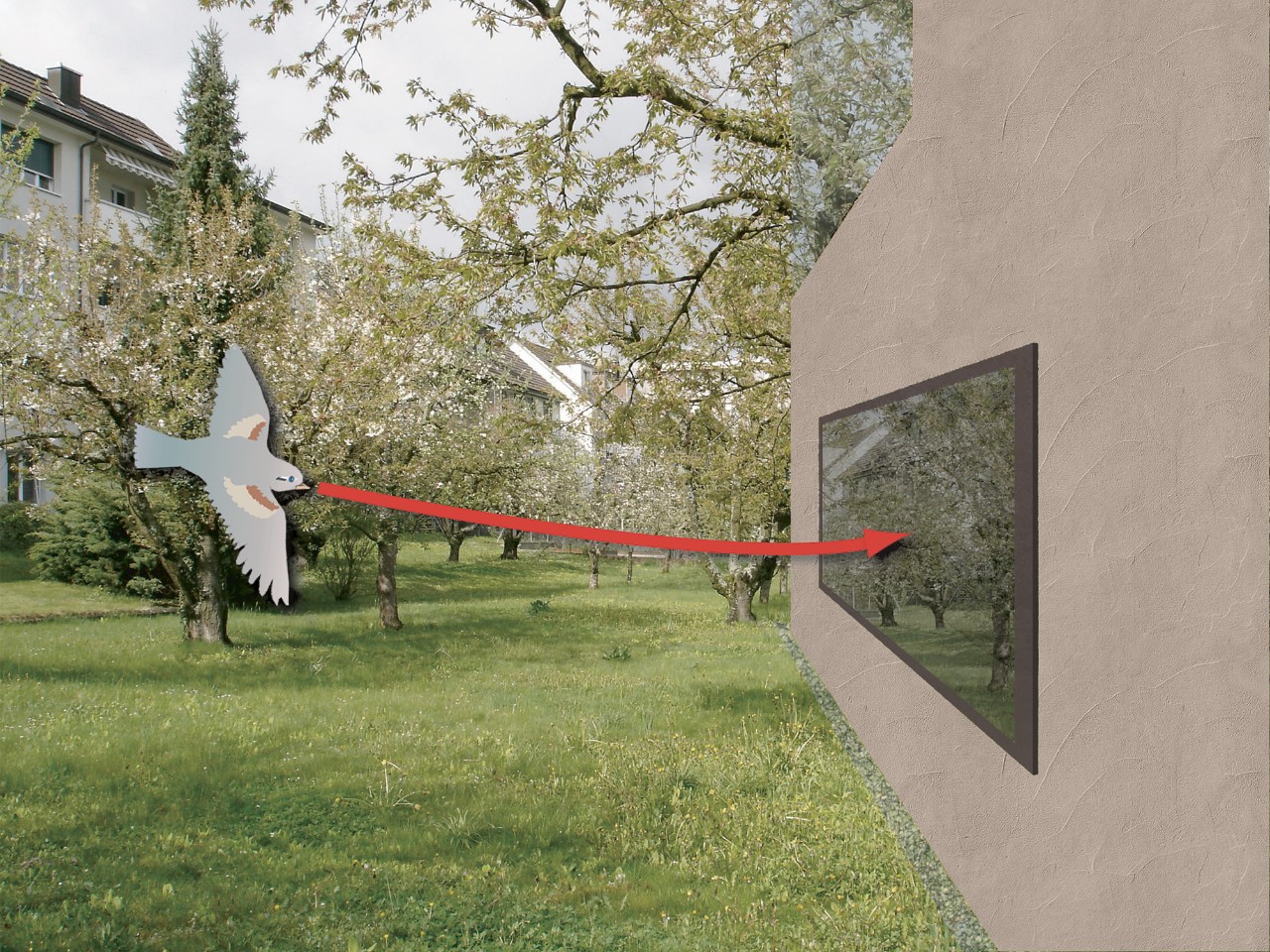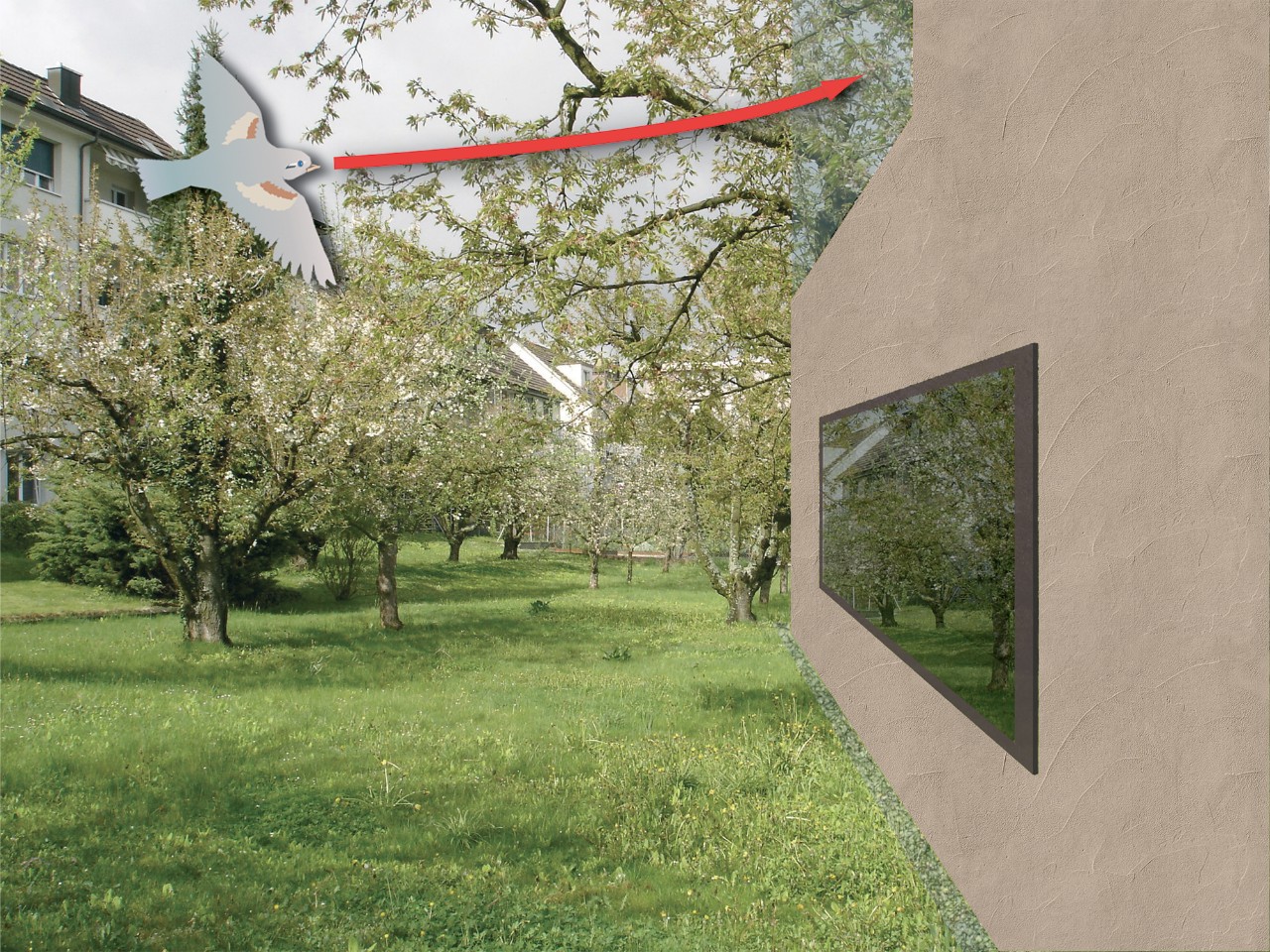Bird friendly glass
Helps prevent birds from colliding into windows and facades

Each year, millions of birds accidentally fly into glass windows, doors and facades, with many of these collisions being fatal. As glass continues to make up more and more of the external building envelope, it is likely that the number of birds affected by this problem will increase over the coming years. Building requirements are becoming more stringent across the world, which means architects are now looking for glass solutions that are safer and which help to reduce the risk of bird collisions, whilst still providing the aesthetic and performance attributes that their projects require.
Why do birds collide with glass?
Cities with a density of building structures, including high-rises, can be the site of nighttime bird collisions due to interior and exterior lighting. Flocks of migrating birds can collide with large buildings and this generates headlines and attention. However, suburban, low-rise buildings account for a much higher percentage of collisions; individual collisions may not be as evident but can happen more frequently. In general, there are four ways buildings and building environments contribute to bird collisions:
Reflection
Birds cannot differentiate between actual and reflections of tree, sky, or habitat. Even lower reflecting glass can act like a mirror when it is bright outside and dark inside. When coupled with certain façade designs, the reflections can create areas that are visually confusing to birds. Reflective materials that provide adequate image formation, pose a danger to birds.


Transmission
When there is a direct line of sight from one window to another (e.g. walkways, corners, bus stops, or transparent wind/sound barriers), birds do not perceive the glass as a barrier, and may attempt to fly through, causing a collision. Also, birds can see wooded atriums or indoor plants as an inviting habitat.
Design
The design of the building and its location can have a significant impact on the collision risk as well as the maximum effectiveness of deterrents. Building shape, location, and landscaping (especially the anticipated height of the tree canopy once mature) all have considerable impact on the collision risk profile of the facility.
Lighting
Birds use the night sky and ambient light levels to aid their migration navigation. This causes nighttime collisions as lighting inside buildings, especially those buildings with potential habitat, attracts birds. Artificial lights, particularly those that point upward, can lure and trap birds in their haze, where they potentially fly to the point of exhaustion.
Benefits of bird friendly glass
Collision deterrence
Patterns on the glass, applied using various technologies, create a visible marker to birds that help them detect the glass as a physical barrier, and avoid it. The effectiveness of the solution depends on the technology used, the pattern element’s size and spacing, but also on other factors such as the building’s surroundings, the lighting conditions, the glazing external level of reflectivity.
Aesthetics
Depending on the technology, bird friendly glass solutions can be more or less visible to humans from the outside of the building. They can become design elements and make a style statement, or they may be subtle and make a more minimalistic statement. From inside the building, the visibility of a bird deterrent depends on lighting and the complexity of scenery outside. Many patterns are designed to virtually disappear when viewed from a distance.
Energy performance
Bird friendly solutions can be combined with high performance coatings to provide thermal insulation and solar control properties to the glazing. These coatings can help maintain a comfortable temperature inside the building by reducing the amount of solar energy that enters the building through the glazing in the summer, or of heat escaping it during the winter.
Environmental stewardship
Birds play a critical role in ecosystems and economies around the world. Between providing food, controlling pests, enriching soil and other contributions, their impact on quality of life is immense1. With many bird populations in decline, it becomes ever more serious to address the problem of bird-window collisions. Bird friendly glass can also contribute to LEED® pilot credit for SSpc55 (“Bird collision deterrence,” SSpc55, CS v4— Core and Shell).
1“Why Birds Matter” by Çagan H. Sekercioglu, Daniel G. Wenny, and Christopher J. Whelan: https://www.allaboutbirds.org/analysis-theeconomic-value-of-birds
Want to know more about glass and its properties?
Guardian™ Glass offers you a wealth of technical notes, tools and online learning to enhance your knowledge about glass and help you specify the most appropriate glass for your project. Visit our Resource Hub to learn more!
Our glass solution for bird-friendly glazing
-

Guardian Bird1st™
Guardian Bird1st™ helps to prevent birds from colliding with buildings – by featuring striking and highly visible patterns to birds, while remaining discreet to humans.
See more